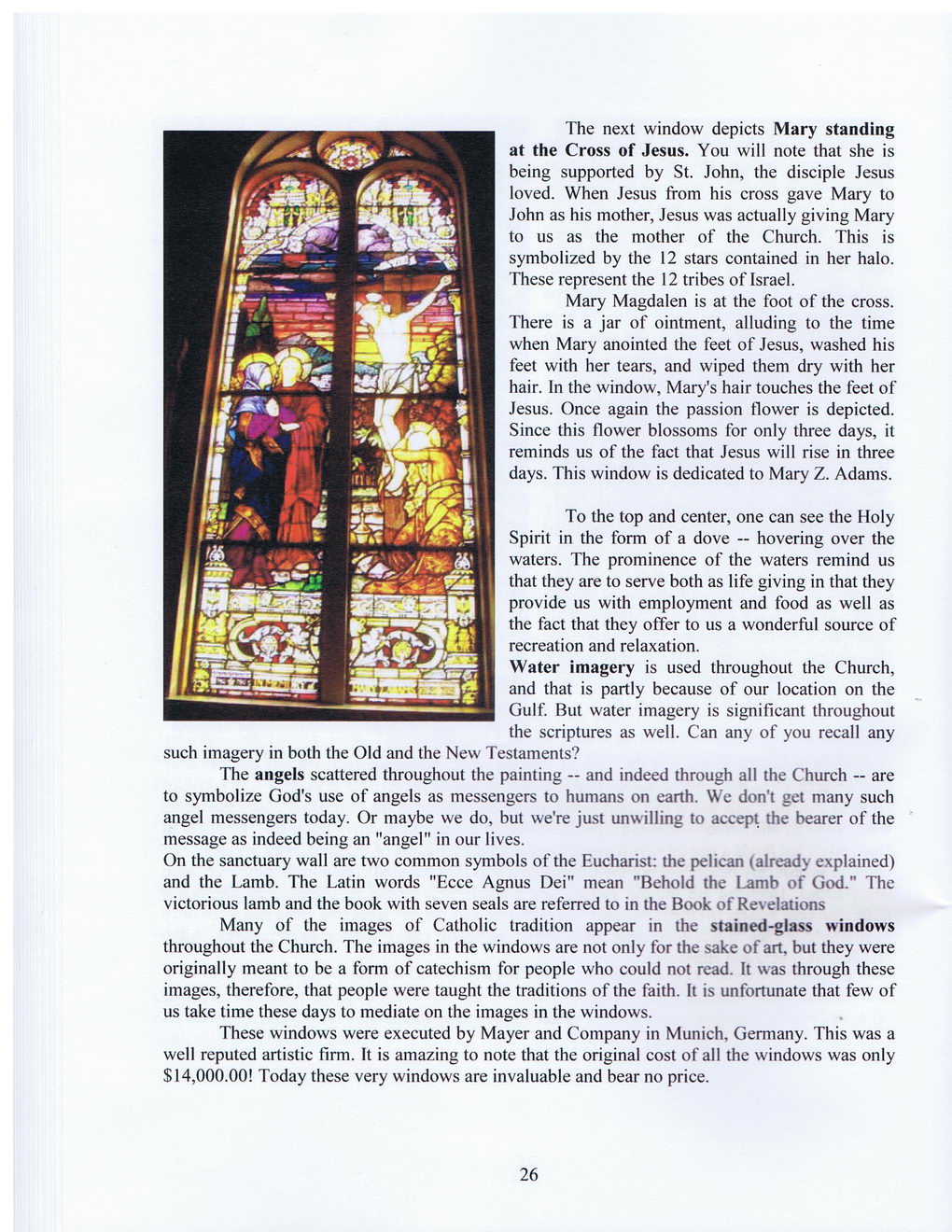This text was obtained via automated optical character recognition.
It has not been edited and may therefore contain several errors.
The next window depicts Mary standing at the Cross of Jesus. You will note that she is being supported by St. John, the disciple Jesus loved. When Jesus from his cross gave Mary to John as his mother, Jesus was actually giving Mary to us as the mother of the Church. This is symbolized by the 12 stars contained in her halo. These represent the 12 tribes of Israel. Mary Magdalen is at the foot of the cross. There is a jar of ointment, alluding to the time when Mary anointed the feet of Jesus, washed his feet with her tears, and wiped them dry with her hair. In the window, Mary's hair touches the feet of Jesus. Once again the passion flower is depicted. Since this flower blossoms for only three days, it reminds us of the fact that Jesus will rise in three days. This window is dedicated to Mary Z. Adams. To the top and center, one can see the Holy Spirit in the form of a dove — hovering over the waters. The prominence of the waters remind us that they are to serve both as life giving in that they provide us with employment and food as well as the fact that they offer to us a wonderful source of recreation and relaxation. Water imagery is used throughout the Church, and that is partly because of our location on the Gulf. But water imagery is significant throughout the scriptures as well. Can any of you recall any such imagery in both the Old and the New Testaments? The angels scattered throughout the painting — and indeed through all the Church — are to symbolize God's use of angels as messengers to humans on earth. We don't get many such angel messengers today. Or maybe we do, but we're just unwilling to accept the bearer of the message as indeed being an "angel" in our lives. On the sanctuary wall are two common symbols of the Eucharist: the pelican (already explained) and the Lamb. The Latin words "Ecce Agnus Dei" mean "Behold the Lamb of God." The victorious lamb and the book with seven seals are referred to in the Book of Revelations Many of the images of Catholic tradition appear in the stained-glass windows throughout the Church. The images in the windows are not only for the sake of art, but they were originally meant to be a form of catechism for people who could not read. It was through these images, therefore, that people were taught the traditions of the faith. It is unfortunate that few of us take time these days to mediate on the images in the windows. These windows were executed by Mayer and Company in Munich, Germany. This was a well reputed artistic firm. It is amazing to note that the original cost of all the windows was only $14,000.00! Today these very windows are invaluable and bear no price. 26

Our Lady of the Gulf Church Document (203)